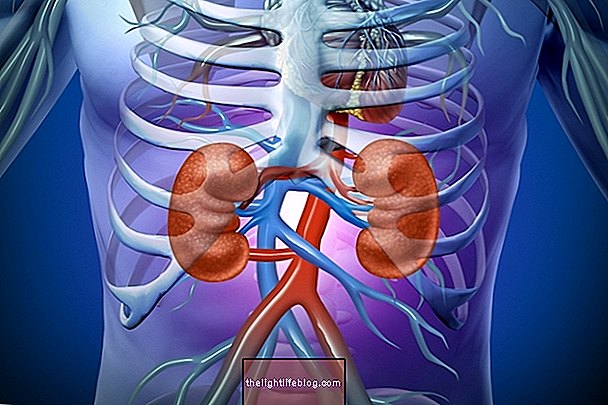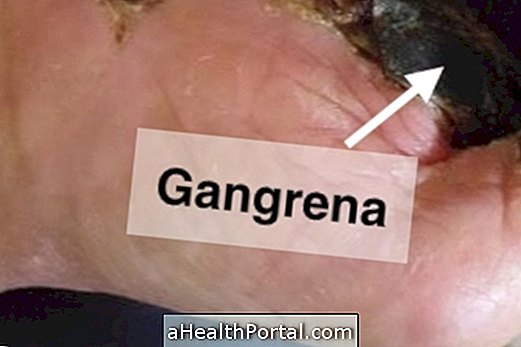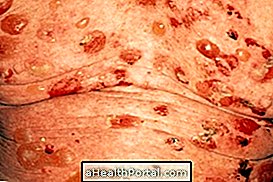Hemangioma is a benign tumor formed by the abnormal accumulation of blood vessels, which can arise in several places of the body, being more common in the skin, in the liver or kidneys, for example. In the skin, the hemangioma may appear as a reddish or purplish spot or a solid, solid, bulging tumor.
According to the period in which it arises, the hemangioma can be classified in:
- Congenital hemangioma, which is identified at birth or during gestation by ultrasonography;
- Childhood hemangioma, which appears in the first 2 weeks of life, can grow until the first year of age and decreases by about 10 years.
In some cases it is common for the hemangioma to remain after 10 years, especially in the case of hemangioma in internal organs. Hemangioma occurs more frequently in premature, Caucasian and female infants.
The hemangioma is cured by surgery, but the treatment is only done in cases of excessive growth of the tumor, since, in most cases, it does not cause complications and does not become cancer. Learn more about treatment for angioma.


Main types
The major types of hemangioma include:
- Hemangioma in the liver: is a type of benign tumor that appears in the liver and does not cause symptoms, being detected in routine exams. Understand what is hemangioma in the liver and when it can be serious;
- Cavernous hemangioma: is a malformation of the blood vessels that is present in the baby's skin, but can also affect muscles or bones. It evolves with the child's growth and increases suddenly when hormonal alteration, local pressure or trauma occurs;
- Hair Hemangioma: is located in the upper layer of the skin and usually disappears after 10 years of age;
- Hemangioma in the spine: it is a benign lesion of the blood vessels that is located in the vertebral column, and that does not present symptoms. When it causes back pain surgery may be recommended;
- Flat Hemangioma: It is observed on the skin as flat wine-colored patches that, from the age of 20, can increase, forming nodules that can bleed.
Generally, flat or cavernous hemangiomas are congenital, already being born with the newborn. Know other causes of red spot on baby's skin.
Does Hemangioma cause symptoms?
Typically, different types of hemangiomas do not cause any symptoms, and are often detected by chance in routine examinations such as ultrasonography, CT or MRI.
Thus, the diagnosis of hemangioma in the skin is usually made in the general practitioner's office through observation of the lesion. In cases of suspected hemangioma in the liver or other organs, it is recommended to perform an MRI to observe the problems and make the diagnosis.
Although not serious and malignant transformation is rare, depending on the location of the hemangioma, there may be impairment in the development of some functions. When present near the eye, it can impair the development of vision, for example.

How to treat
Treatment for hemangioma is done only with the surveillance of the problem by the general practitioner, since it is common for the hemangioma to disappear alone. In some cases the doctor may recommend consulting a hepatologist to evaluate and monitor the hemangioma in the liver or the dermatologist for the hemangioma on the skin, for example, that should perform a series of dermatological examinations. Find out how the dermatological exam is done.
Hemangioma surgery is most advised when the tumor causes complications such as obstruction of the airways, when it causes interference in vision or hearing, or when it is difficult for the heart to work, removing excess vessels and relieving the patient's symptoms, as well as cases of desires to improve aesthetic appearance.
In addition to surgery, laser therapy or sclerotherapy may be indicated, which may reduce blood flow and eliminate some vessels, or use of medications, such as corticoids or beta-blockers, which may decrease vessel proliferation, chosen depending on the characteristics of each case.
It is therefore recommended to go to the general practitioner when abnormal or unexplained skin spots appear, as it may be a sign of hemangioma or more serious problems such as skin cancer. Learn more about identifying and treating skin blemishes.





















